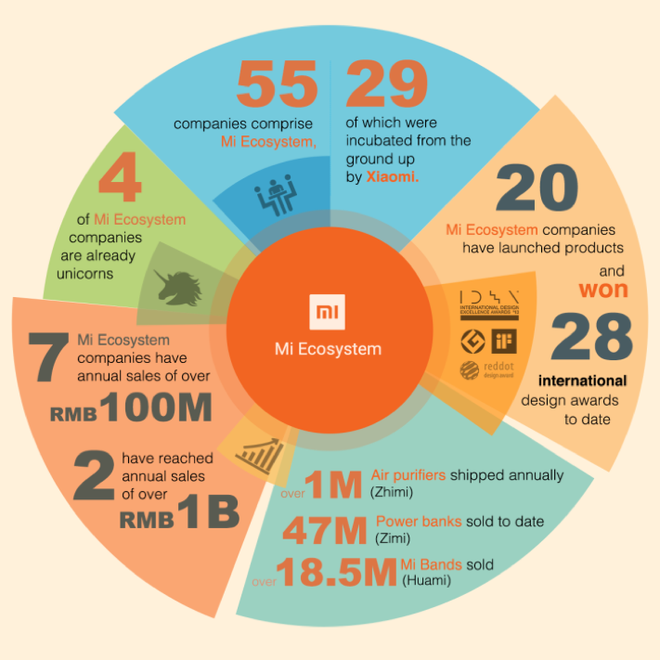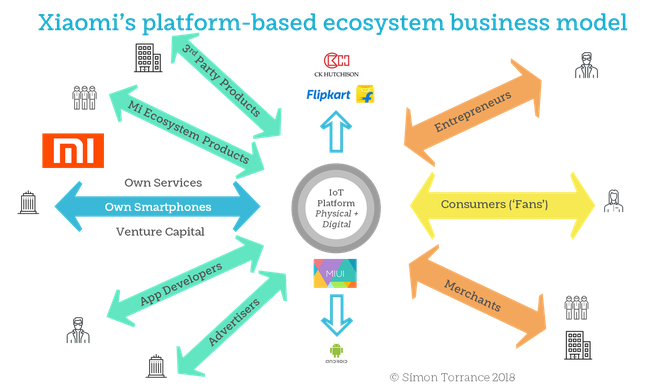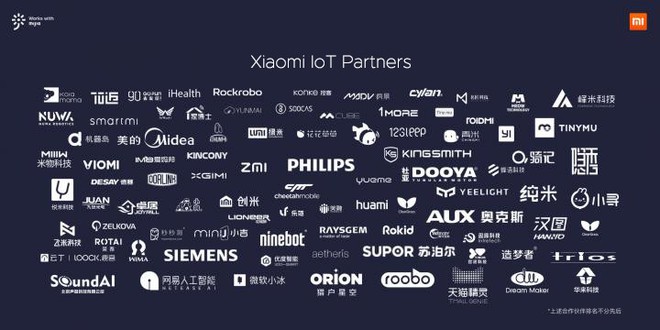Smartphones are just a springboard for Xiaomi’s true ambition: the IoT smart device
- Tram Ho
It’s not wrong to call Xiaomi China’s Apple. Not only did Xiaomi create the MiUI operating system with many interface elements similar to iOS or hardware products with similar designs of Apple, Xiaomi also learned Apple in creating a separate ecosystem through the smartphone of yourself.
However, while Apple has built a software ecosystem with tightly controlled third-party applications, Xiaomi cannot create such a software ecosystem while still using the platform. Android by Google. But their efforts focused on a different strategy: seeing smartphones as a platform, rather than a mere hardware device. From there, they built an IoT smart device ecosystem.
See smartphones as a platform, not a profitable product

To make this happen, Xiaomi first needs smartphones with good quality and affordable price to easily reach users. And that is what they have been doing since the beginning.
From 2018, Xiaomi CEO Lei Jun has pledged that the company’s profit margin for hardware products (including smartphones, IoT devices, household products) will only be at 5%. – a level of profit too fragile compared to giants like Apple or Samsung. Low profit margins have allowed Xiaomi to launch smartphones at significantly cheaper prices than similarly configured rivals.
In fact, in recent years, smartphones have been popularized at an incredible rate. That makes it more difficult than ever to make a profit from selling smartphones. Apple and Google are almost two main beneficiaries of the smartphone playing field when they have iOS and Android software platforms. Therefore, like it or not, the commitment to earn only 5% of profits from Xiaomi’s smartphones is inevitable when they do not have any core technology.
That is why Xiaomi executives from 2013 have said that they are “an internet company” rather than a smartphone manufacturer. They understand that smartphones will not be able to grow sustainably in the future if they stand as a single product – they need to create an ecosystem around it.

Vision builds a device ecosystem revolving around Xiaomi’s smartphone.
Use smartphones to create an IoT device ecosystem
But building such an ecosystem is not easy. Internet-connected smart devices have even been around for decades before smartphones (Bill Gates’ house has been available since 1997), but until now, despite the cost of the devices This has dropped to a more accessible level, its user experience is still very poor and terrible.
Therefore, Xiaomi is trying to make that experience easier through the MiUI operating system on its smartphones. Inside this operating system is the MiUI Smart Living system with a wide range of features including Mi Work, Mi Health, Mi Go, Mi Home and Mi Game, and many other interactive features between devices in the same. Ecosystem. All are aimed at making the control of smart devices through Xiaomi smartphones more smoothly.

The business model revolves around Xiaomi’s IoT platform.
If there’s anything that makes smartphones so popular today, it’s because Apple created the first iPhone perfectly. It became the standard formula for smartphones that came out later and made them popular. And Xiaomi is pioneering the same thing for IoT devices – making the user experience with these devices perfect, thereby making the standard formula for the popularization of smart devices.
Like smartphones, Xiaomi thinks selling expensive IoT devices is not a way to make a sustainable profit. Moreover, the high price will make users more alienated and difficult to build a solid foundation for the company’s strategy. Therefore, just like with smartphones, Xiaomi claims to take only 5% profit margin for IoT devices as well as other household products.
Going further, Xiaomi also poured money to IoT device manufacturing partners and undertook the distribution of these devices through its e-commerce channel as well as its physical stores. Not only the capital and distribution channels, Xiaomi’s reputation also makes these devices accessible to millions of users around the globe quickly.
According to Xiaomi’s financial report, as of March this year, the company has backed about 300 companies with a total investment of up to 4.54 billion USD and net profit of about 32 million USD in just first quarter of this year. As of March 2020, the number of IoT devices connected to Xiaomi’s IoT platform reached 252 million, an increase of 42.6% over the same period last year, a figure showing Xiaomi’s strategy is going. right direction.

Partners participate in building IoT devices with Xiaomi.
There is still a long way to go
But the journey to build an IoT device ecosystem on the smartphone platform is not an easy challenge for Xiaomi. While building an ecosystem was hard, getting enough profits from it was even harder. The meager net profit in the first quarter of this year from the billions of dollars in capital above also shows that.
The same thing is happening with the company’s internet services. Despite claiming to be “an internet company,” Xiaomi’s internet services, including financial products and video games, have only accounted for 12% of the company’s total revenue in the first quarter. The bright spot here is its growth rate, up to 38.6% over the same period last year.

Obviously Xiaomi’s journey to conquer the IoT playground still has a long way to go, but it’s undeniable that they are ahead of other competitors on the smart device playground. Huawei – a well-known device manufacturer only has 8 IoT products, a number that is too small compared to the number of IoT devices that Xiaomi is distributing.
This position helps Xiaomi stand at the threshold of a great leap forward if they control this IoT ecosystem. Studies show that the global IoT device market could reach $ 1,600 billion by 2025. Meanwhile, up to now, the mobile app market – controlled by Apple and Google – has only reached a scale of about 500 billion USD, and can reach 1,000 billion USD by 2023. This comparison shows how big a potential gold mine Xiaomi holds.
Many other companies have also realized this gold mine and began to jump into that playground. In May, Alibaba announced it would spend about $ 1.4 billion to strengthen its voice virtual assistant, in order to integrate deeper into e-commerce experiences, online entertainment services as well as IoT devices of partners.
But perhaps it is hard to catch up with Xiaomi in the current IoT market.
Source : Genk
